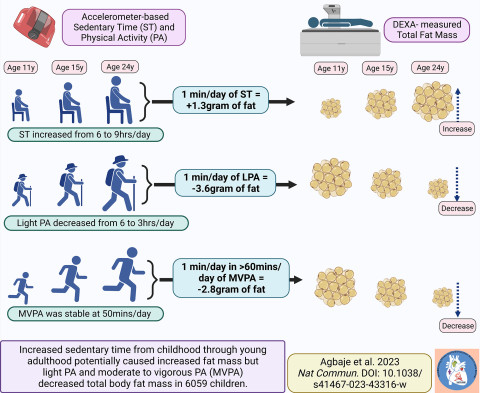Childhood obesity is a growing concern, with long-term consequences for health and well-being, which is why preventing it is important. While physical activity is crucial in combating this issue, the debate continues about which type of activity is most effective: light physical activity (LPA) or moderate-to-vigorous activity (MVPA)?
Light Physical Activity
LPA includes activities like walking, cycling at a leisurely pace, housework, and gardening. While often overlooked, recent studies suggest LPA might be an underestimated weapon in the fight against childhood obesity. Here’s why:
- More feasible: LPA can be easily incorporated into daily routines, making it more sustainable for children compared to structured MVPA sessions.
- Cumulative effect: Even small amounts of LPA throughout the day add up, leading to significant calorie expenditure over time.
- Metabolic benefits: Studies suggest LPA may improve insulin sensitivity and blood sugar control, contributing to weight management.
Moderate-to-Vigorous Activity
MVPA includes activities like running, swimming, dancing, and team sports. Traditionally, it has been the cornerstone of physical activity guidelines for children. MVPA offers several benefits:
- Increased calorie burning: MVPA burns more calories in a shorter period compared to LPA, leading to faster weight loss.
- Improved cardiovascular health: MVPA strengthens the heart and lungs, reducing the risk of heart disease and other chronic conditions.
- Stronger bones and muscles: MVPA promotes bone density and muscle growth, contributing to overall physical fitness.
So, LPA or MVPA? The Answer May Surprise You!

The latest research suggests that engaging in light physical activity (LPA) may be more effective than moderate-to-vigorous physical activity (MVPA) in reversing significant rise in body fat.
The study, conducted by researchers at the University of Bristol, the University of Exeter, the University of Colorado, and the University of Eastern Finland, tracked the movement behavior and fat mass of 6,059 children from age 11 to 24. The results showed that:
- Sedentary time increased from an average of 6 hours per day in childhood to 9 hours per day in young adulthood.
- LPA decreased from 6 hours per day to 3 hours per day.
- MVPA remained relatively stable at around 50 minutes per day.
For every minute spent sedentary, participants gained an average of 1.3 grams of total body fat mass. This means that sedentary time potentially contributed to 700 grams to 1 kg of fat mass gained during growth from childhood to young adulthood.
However, the study also found that for every minute spent in LPA, participants lost an average of 3.6 grams of total body fat mass. This suggests that cumulative LPA may have reduced total body fat mass by 950 grams to 1.5 kg during growth from childhood to young adulthood.
MVPA, on the other hand, was only associated with a 70 to 170 gram reduction in total body fat mass.
“Our study provides novel information that would be useful in updating future health guidelines and policy statements,” says Dr. Andrew Agbaje, lead author of the study. “Prior to this study, it has not been possible to quantify the long-term contribution of sedentary time to fat mass obesity and the magnitude by which PA may reduce it.”
Dr. Agbaje also points out that previous research has shown that LPA is more effective than MVPA in promoting heart health, lowering inflammation, and lowering cholesterol levels in children and adolescents.
These findings suggest that LPA may be an unsung hero in preventing childhood obesity. Examples of LPA include long walks, house chores, slow dancing, slow swimming, and slow bicycling.
“It is high time the world replaced the mantra of ‘an average of 60 minutes/day of MVPA’ with ‘at least 3 hours/day of LPA,'” says Dr. Agbaje. “Combined evidence from our recent studies suggests a paradigm shift in the preventive battles against obesity, inflammation, and heart damage from childhood. We may need to de-emphasize that 80% of adolescents do not meet MVPA guidelines but rather promote LPA.”
The findings of this study have important implications for public health policy and practice.
- Public health experts and policymakers should focus on promoting LPA as a way to prevent childhood obesity.
- Health professionals should encourage parents to help their children find ways to incorporate more LPA into their daily lives.
- Schools and other organizations that work with children should provide opportunities for LPA, such as recess breaks and after-school programs.
By making it easier for children to get more LPA, we can help to prevent the rise of childhood obesity and improve the health of future generations.
Continue to check our website soundhealthandlastingwealth.com for more articles of this kind. And, please use our comment section as well, we would love to hear from you.









